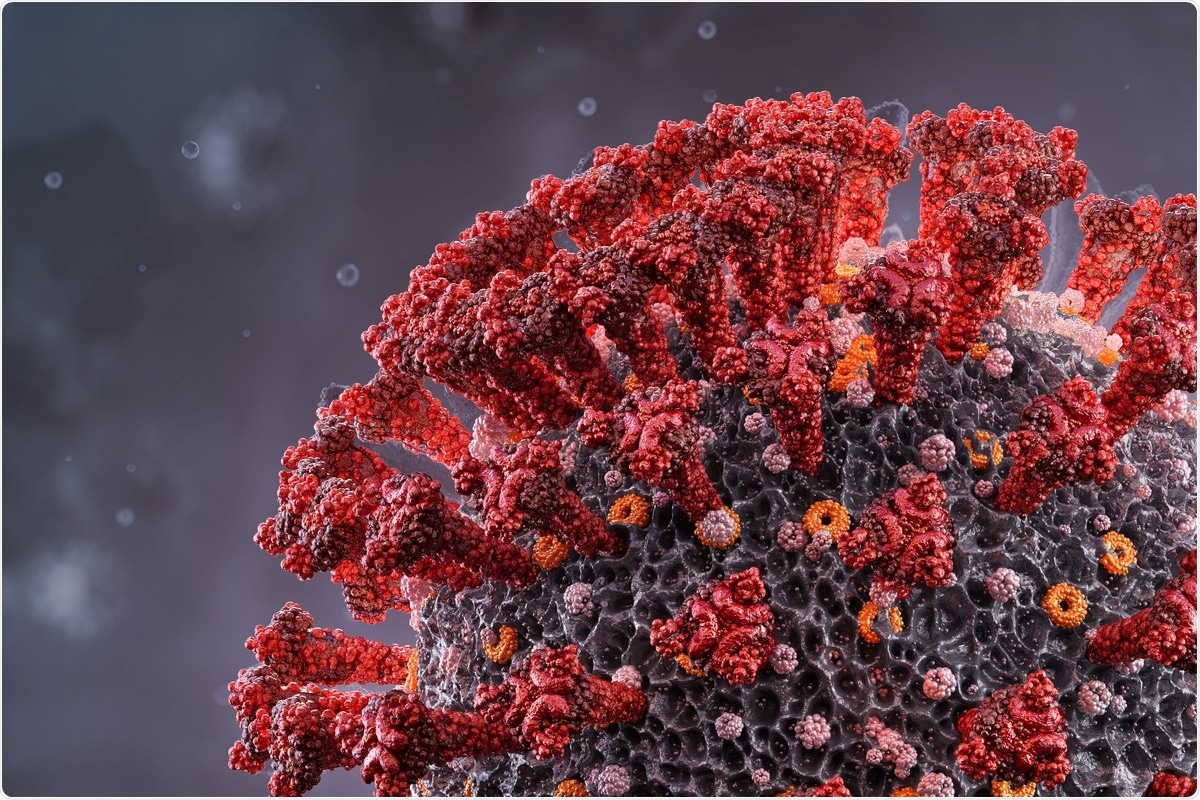A team of scientists from the United States has recently revealed the antiviral efficacy of stem-loop RNA 14, a RIG-1 agonist, in controlling severe acute respiratory syndrome coronavirus 2 (SARS-CoV-2) infection in mice. The compound reduces the risk of severe coronavirus disease 2019 (COVID-19) by inhibiting viral replication in the lower respiratory tract. The study is currently available on the bioRxiv* preprint server.

Background
SARS-CoV-2, the causative pathogen of COVID-19, primarily attacks the upper and lower respiratory tracts to develop a wide variety of symptoms, ranging from mild fever and dry cough to severe pneumonia and respiratory failure.
The innate immune system plays a crucial role as the first line of defense to prevent the propagation of SARS-CoV-2 to the lower respiratory where it causes serious complications. Through the pattern recognition receptors, such as RIG-1 and toll-like receptors, the innate immune system recognizes viral antigens and induces the production of type 1 interferons. Upon secretion, type 1 interferons act via specific receptors to induce the expression of interferon-stimulated genes with potent antiviral activities.
Given the importance of interferon response in SARS-CoV-2 infection, the scientists have investigated the antiviral efficacy of stem-loop RNA 14 (SLR 14), which is a synthetic activator/agonist of the pattern recognition receptor RIG-1, in preventing SARS-CoV-2 infection in mice.
Regarding mode of action, previous studies have shown that SLR 14 specifically activates RIG-1 to initiate type 1 interferon response within 2 hours of intravenous administration in mice.
Important observations
Transgenic mice expressing human angiotensin-converting enzyme 2 (ACE2) were used to examine the therapeutic efficacy of SLR 14. The mice were intranasally challenged with SARS-CoV-2 and administered with SLR 14 via intravenous injection 4 hours after infection.
Compared to untreated mice, SLR 14-treated mice showed a dramatic improvement in body weight loss and mortality rate at day 8 post-infection. Moreover, RT-PCR- and plaque assay-based analyses of the lung tissues revealed that SLR 14 treatment significantly reduced the viral RNA level and eliminated the infectious virus. The clearance of infectious virus from the lungs resulted in attenuated expression of interferon-stimulated genes, including Cxcl9, Isg15, and Usp18.
At day 5 post-infection, a significantly reduced lung infiltration of monocyte-derived proinflammatory macrophages was observed in SLR 14-treated mice. In addition, these mice showed a reduced expression of major histocompatibility complex (MHC) class II molecules on monocytes.
To determine the mode of action of SLR 14, mice were pretreated (2 hours before viral challenge) with SLR 14 and/or neutralizing antibodies that block type 1 interferon signaling. Although pretreatment with only SLR 14 significantly protected the mice from SARS-CoV-2 infection, no such benefit was observed in mice pretreated with both SLR 14 and neutralizing antibodies. Similar results were obtained from in vivo experiments conducted on interferon receptor-deficient mice. Taken together, these observations reveal that SLR 14 mediates its antiviral activity via type 1 interferon signaling.
The interferon-mediated antiviral activity of SLR 14 was observed in the lung parenchyma and trachea as early as day 3 post-infection. However, a significant protection from SLR 14 in the nasal cavity was observed only at day 8 post-infection. These observations indicate that administration of SLR 14 in the nasal cavity might be beneficial to prevent SARS-CoV-2 infection at an early stage.
Regarding cellular uptake, the findings revealed that SLR 14 is primarily taken up by pulmonary epithelial cells and inflammatory macrophages. This further justifies the crosstalk between SLR 14 and interferon signaling.
Regarding treatment timing, the findings revealed that SLR 14 provides the highest protection when administered 16 or 2 hours before infection or 4 hours after infection. However, a gradual decline in the level of protection was observed when SLR 14 was administered 24, 48, or 72 hours after infection. These observations indicate that SLR 14 is more beneficial as a prophylactic or early post-exposure prophylactic drug than as a therapeutic drug.
To evaluate the therapeutic potential of SLR 14, immunocompromised mice were treated with SLR 14 and/or interferon-blocking antibodies 7 days after SARS-CoV-2 infection. The findings revealed that SLR 14 significantly reduced the lung viral load in an interferon-dependent manner at day 14 post-infection.
Regarding broad-spectrum antiviral protection, the findings revealed that intravenous administration of SLR 14 four hours after infection could provide complete protection against the P.1 and B.1.526 variants of SARS-CoV-2. However, SLR 14 was found to be less effective against the B.1.351 and B.1.1.7 variants.
Study significance
The study highlights the antiviral efficacy of SLR 14, a RIG-1 agonist, in providing protection against SARS-CoV-2 and its variants. By regulating interferon signaling, SLR 14 significantly inhibits SARS-CoV-2 replication in the lower respiratory tract and reduces the risk of severe COVID-19.
*Important notice
bioRxiv publishes preliminary scientific reports that are not peer-reviewed and, therefore, should not be regarded as conclusive, guide clinical practice/health-related behavior, or treated as established information.
https://news.google.com/__i/rss/rd/articles/CBMiemh0dHBzOi8vd3d3Lm5ld3MtbWVkaWNhbC5uZXQvbmV3cy8yMDIxMDYxOC9SSUctMS1hZ29uaXN0LXNob3dzLXBvdGVudC1hbnRpdmlyYWwtZWZmaWNhY3ktYWdhaW5zdC1TQVJTLUNvVi0yLWluZmVjdGlvbi5hc3B40gF-aHR0cHM6Ly93d3cubmV3cy1tZWRpY2FsLm5ldC9hbXAvbmV3cy8yMDIxMDYxOC9SSUctMS1hZ29uaXN0LXNob3dzLXBvdGVudC1hbnRpdmlyYWwtZWZmaWNhY3ktYWdhaW5zdC1TQVJTLUNvVi0yLWluZmVjdGlvbi5hc3B4?oc=5
2021-06-18 15:57:00Z
CAIiEG0XQKaEKKtjE4Vavu2apFsqMwgEKioIACIQZdRflS9INK7zM5FkBi3R3CoUCAoiEGXUX5UvSDSu8zORZAYt0dwwr47MBg
Bagikan Berita Ini














0 Response to "RIG-1 agonist shows potent antiviral efficacy against SARS-CoV-2 infection - News-Medical.Net"
Post a Comment